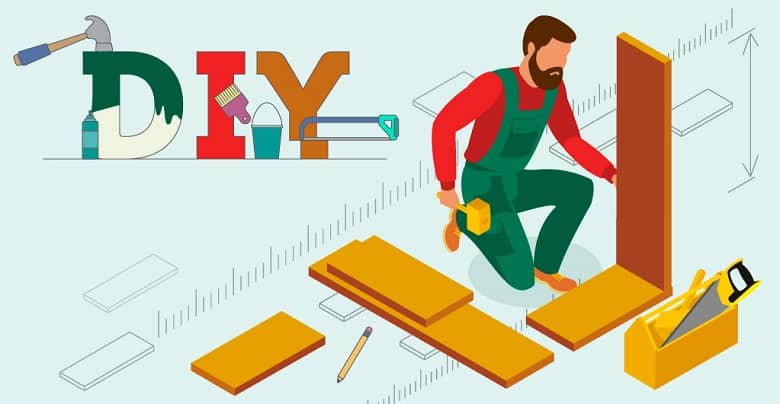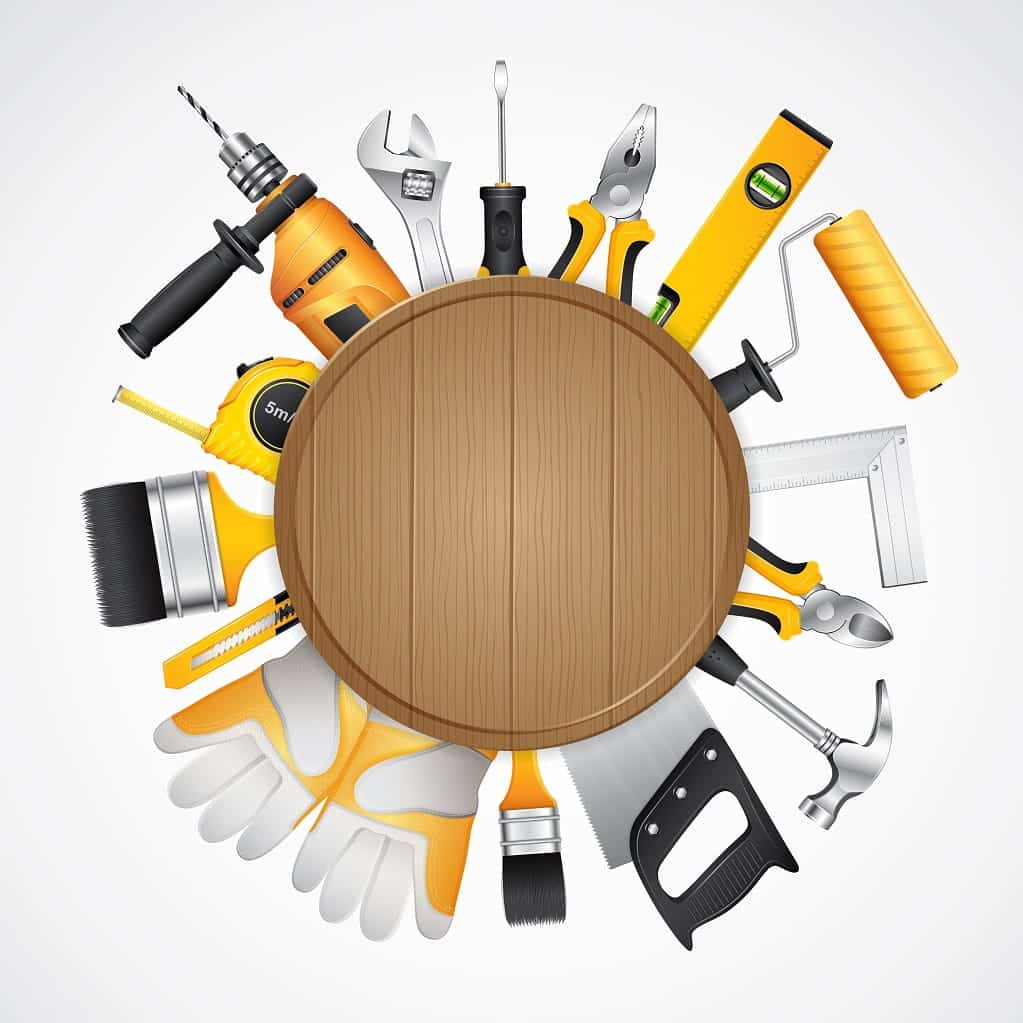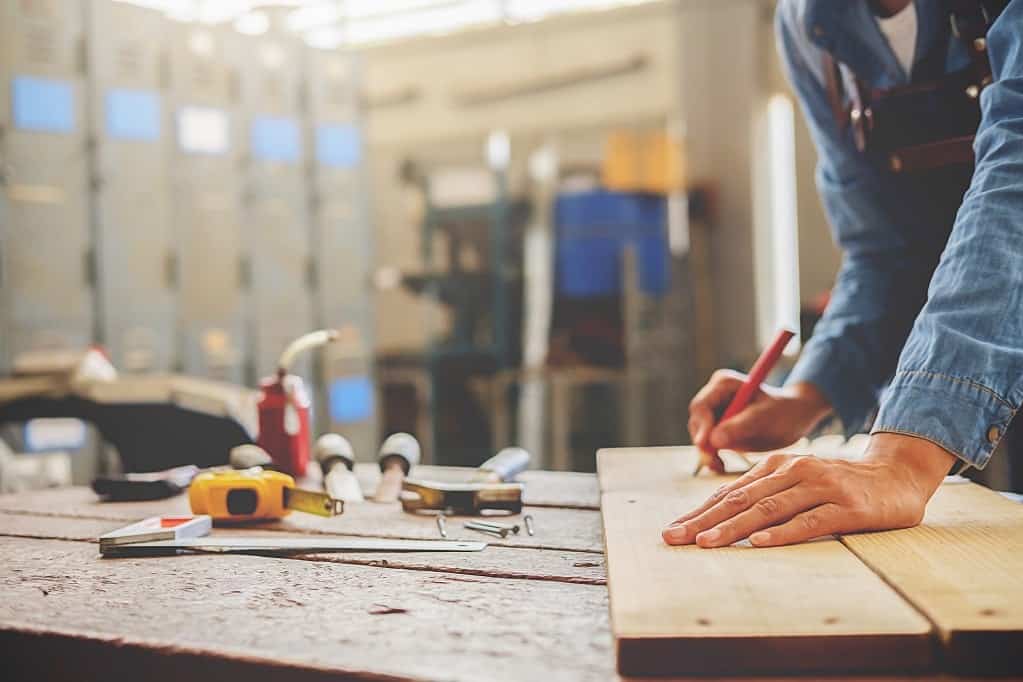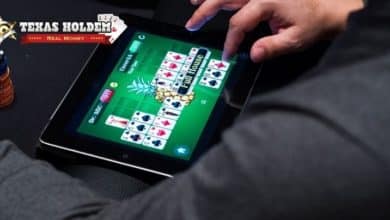A DIY Guide to Build Your Own Poker Tables

Poker is so addictive that it is hard to keep yourself away from it once you get into it. It is an exciting game to make some extra cash by trying your luck coupled with a set of skills while enjoying the company of other poker players. The game is famous for its ease of play and creating a friendly atmosphere, for it brings on board a bunch of players, each better from one another. However, it is impossible to spend the whole time in a casino or poker room, no matter how die-hard a poker fan you are. It begs a simple question, how to enjoy the game with friends from the comfort of home.
Since poker is played on different tables, the first thing that pops up in one’s mind is to buy a poker table, cheap that is. Huh! pretty simple. But this idea seems logical only if you are ready to loosen your pockets as it could cost you anywhere between $1,500-2,500 from a basic to the high-end table.
So, what is the solution?
The answer is to build your own – yes, you heard it right. Now, you will definitely want to know how to build a poker table.
In this article, we’ll show you how to build your own poker table on your own and set it up for a game night on weekends or holidays. Given the table’s simple design, it does not require advanced carpentry skills to sculpt one out of the wood. Furthermore, you can build it in a day or two at a budget as low as $200. All you will need is hardware tools and a helping hand – well, just in case. We have also created a step by step guide on how to build a poker table.
Tools and Materials Required to Build Your Own Poker Table
 Crafting a poker table begins with choosing the right tools and supplies. Not to mention one must know how to use them for the cause. Most of the tools are common, they might be lying in a specific corner in your backyard or garage. But if you don’t have any, purchase them from a nearby hardware store. Your diy poker table needs:
Crafting a poker table begins with choosing the right tools and supplies. Not to mention one must know how to use them for the cause. Most of the tools are common, they might be lying in a specific corner in your backyard or garage. But if you don’t have any, purchase them from a nearby hardware store. Your diy poker table needs:
Materials
- Foldable table legs
- 2 sheets of plywood (4’ x 8”)
- Poker table cup holders
- Poker speed cloth/felt
- Poker table rail vinyl
Measuring Tools
- Carpentry pencil/Grease marker
- Combination square
- Framing square
- Ruler
Cutting Tools
- Circular saw/jigsaw
- Miter saw with a finishing blade
- Utility scissors
- Utility knife
Joining Tools
- Adhesive spray
- Black drywall screws
- T-bolt nuts
- Clamps
- Drills
- Hammer
- Nail gun
- Screwdriver
- Staple gun
- Table leg braces
- Wood filler
- Wood glue
- Wood screws
Cleaning/Finishing Tools
- Paintbrush or sprayer
- Pine trim
- Sander/router
- Washers
- Wood stain
Plan to Make a Table
There are a variety of table plans to choose. Having a thoughtful plan is a must when building a poker table. Many factors come into play in designing a table that fits your room and its surroundings. From choosing the right color scheme to deciding size, you need to consider every minor detail to meet perfection. Instead of going for the build straight away, consider your resources and requirements to avoid any hassle.
Based on the number of players and room size, choose from several poker table plans before you know how to build a poker table. Some examples of table plans include an oval poker table, octagon poker table, round poker table, racetrack poker table, lighted poker table, and raised poker table. Do not forget to pick the best wooden board.
Step by Step Guide to Make a Poker Table
 Once you have got the table plans, it is time for execution. Making something out of wood is nothing less than art, especially when you are not a pro. But you can still build your poker table by applying fine-woodworking instructions and going by the plan and design.
Once you have got the table plans, it is time for execution. Making something out of wood is nothing less than art, especially when you are not a pro. But you can still build your poker table by applying fine-woodworking instructions and going by the plan and design.
Another thing worth mentioning is working in a place that has enough space to hold your tools and make you comfortable with your woodwork. The process of constructing an 8-player oval poker table measuring 48″ x 96″ has been broken down into steps to give you a clear understanding.
Step 1: Mark the Measurements
- Take the first sheet of plywood to form the bottom piece of the poker table rail and the table top.
- Measure the size of the envisioned table on both the plywood sheets vertically and horizontally using a ruler and a carpentry pencil.
- Use points to create two semi-circles – one for the outside edge and another for the inside edge of the bottom rail. (Repeat on the other side as well).
- Connect the two semi-circles through a straight line.
- Now, take the second sheet to form the top piece of the rail.
- Locate and mark the spots vertically and horizontally again.
- Measure out the size of the envisioned table from marked spots to create two semi-circles. (Repeat on the other side as well).
- Thus, outside and inside edges of the poker table rail will be created.
Step 2: Cut Out the Rail and Tabletop
- Place both sheets of plywood on sawhorses.
- Cut them into four pieces using a jigsaw.
- Cut out corners.
- Use sander or router to smooth edges and sides.
- Support rail and table top with clamps.
- Drill a pilot hole to start cutting with a jigsaw.
- Extend lines through the straight edge.
- Continue drilling a hole next to the line.
- Trace and cut out holes on the rail for poker table cups.
- Remove clamps.
Step 3: Glue and Screw the Rail and Tabletop
- Apply polyurethane to all sides of rail and table top to make them liquid resistant.
- Place them on sawhorses.
- Make sure the rail and tabletop are lined up together.
- Clamp them together for support.
- Apply wood glue and screw together to attach the bottom piece of the rail with the tabletop.
- Let them dry for a while.
- Use sander or router to remove any roughness on curves.
- Drill pilot holes around the rail and tabletop.
- Use a countersink and screwdriver to insert sheetrock screws into the holes.
- Remove clamps.
Step 4: Install Bolts into the Rail
- Position rail over the table top.
- Make sure a gap is there for the felt and vinyl between the rail and tabletop.
- Clamp them together to provide support.
- Drill holes around the rail and through the tabletop from inside the edge.
- Remove rail from the tabletop
- Install T-bolt nuts using a hammer through holes in the rail.
- Fill holes with wood filler.
- Use sander or router to smooth edges of the tabletop to allow a better fit for rail.
Step 5: Apply Foam to the Rail and Tabletop
- Clear off the dust and debris from the platforms.
- Spray heavy-duty adhesive to both the rail and table top.
- Apply foam onto the sprayed glue areas.
- Weigh the foam down in the middle through the edges.
- Remove air bubbles, if any.
- Make sure the foam covers all the sides, including the bottom of the rail.
- Cut off extra foam using a utility knife in a way that the foam is flush with both pieces.
- Locate and cut open the holes for bolts.
Step 6: Apply Speed Cloth/Felt to the Tabletop
- Place the speed cloth/felt face-down on a flat surface.
- Spray adhesive across the entirety of the speed cloth/felt.
- Position tabletop face-down onto the speed cloth/felt.
- Stretch it out over the tabletop through straight edges.
- Staple the speed cloth/felt to the tabletop bottom using a staple gun.
- Trim extra speed cloth/felt with scissors or utility knife.
- Locate and cut open the holes for bolts.
Step 7: Apply Poker Table Rail Vinyl
- Place the vinyl face-down on a flat surface.
- Position the rail foam-side down onto the center of the vinyl.
- Make sure the rail is wrapped in the vinyl.
- Stretch it out over the rail through the straight edges, sides, and curves.
- Staple the vinyl to the bottom of the rail using a staple gun.
- Trim extra vinyl with scissors or utility knife.
- Locate and cut open the holes for bolts.
Step 8: Install the Rail to Tabletop
- Locate holes for bolts in the table top.
- Mark every hole in the speed cloth/felt and foam.
- Place the rail onto the tabletop.
- Make sure bolts pass through the holes.
- Put a washer on each bolt nut.
- Tighten bolt nuts through the tabletop bottom into the rail.
- Thus, the rail is installed on the tabletop.
Step 9: Attach Folding Legs to Table
- Turn the poker table upside down.
- Stain the bottom of the tabletop before installing the folding legs.
- Trace the tabletop bottom from end-to-end and mark the spot for inserting folding legs.
- Drill a pilot hole in each marked spot.
- Apply wood glue and screw table legs with braces into the pilot holes.
- Let the table with inserted legs dry for a few hours.
Step 10: Finishing the Poker Table
- Use sander or router to clear roughness off the edges or remove excess glue left on the tabletop to make it smooth.
- Clean the tabletop with a wet cloth to make sure no sawdust is left on the table.
- Apply multiple finishing coats of wood stain to give your table a premium look.
- Let the whole set-up dry for about 1-2 hours before you use it for gaming.
Cost to Make a Poker Table
Building a poker table like the one discussed here could cost you anywhere between $200-$300 depending on where you shop materials from and design of the table. Following is an estimated breakdown of the cost of making a poker table at home.
| Materials | Cost |
| Two sheets of plywood (4’ x 8’’) | $60 – $80 |
| Folding table legs | $30 – $40 |
| Speed cloth/felt | $40 – $50 |
| Foam | $20 – $30 |
| Rail vinyl | $20 – $40 |
| Other supplies | $30 – $60 |
| TOTAL | $200 – $300 |
Conclusion
This poker table diy at home is a fun project for you and your friends, especially if you are at least comfortable assembling simple furniture. You can also make trays for poker chips. Trays can hold 300 to 800 poker chips. Now that you know how to build, poker table is easy to build from scratch. The next time you invite friends for a game night with rights reserved on your table, you’ve got a poker room ready at your home.



